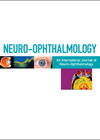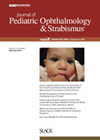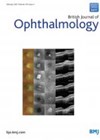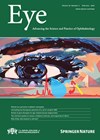You searched for "astigmatism"
Risk of developing pseudotumor cerebri in women using a levonorgesteral intrauterine device
1 December 2017
| Claire Howard
|
EYE - Neuro-ophthalmology
|
Contraception, idiopathic intracranial hypertension, intrauterine system, levonorgestrel, pseudotumor cerebri
Pseudotumor cerebri (PCT) is a disorder causing increased intracranial pressure without a mass lesion, usually seen in obese women of childbearing age. Idiopathic intracranial hypertension is an idiopathic form of the disorder, but several medications have been associated with the...
Headaches in ophthalmology (part 2)
Ophthalmologists see a large number of patients with headaches or facial pain in the ophthalmic outpatient clinics or in emergency clinics. Over two articles, I will discuss several causes of headaches, ocular manifestations and proposed management and referral options. It...The treachery of images – making sense of OCT imaging
In 1929 Belgian surrealist Rene Magritte produced his painting La Trahison des Images. It depicted an old fashioned pipe for smoking tobacco and underneath were the words “ceci n’est pas une pipe”, this is not a pipe. You may wonder...Urban Changes and Rural Struggles for Ophthalmology in China
1 December 2013
| Anne-Line Crochet, Christopher Liu (Prof)
China is by far the most populated country in the world, with over 1.3 billion inhabitants. It is also the country with the highest number of blind and visually impaired people. As a developing country, half of China’s population lives...
AOP calls for ‘bold thinking’ in response to DHSC request for new minor and urgent eyecare service
The development of a standard specification for ICBs is welcome but ambition for a national approach ‘should not be sacrificed’.Should we move towards procedure-specific consent forms?
1 October 2017
| Shizhuan Tan, M Arunakirinathan, A Rajasekaran, SA Sadiq
|
EYE - General
The consent process represents the patient’s acceptance of the information provided to them and an agreement to undergo an intervention as suggested by a health professional. Effective doctor-patient communication, ensuring the succinct delivery of the necessary points in a way...
Photoscreener use in pseudophakia
The purpose of this study was to compare refractive data obtained by the Plusoptix and SPOT to data obtained during masked paediatric ophthalmic examinations with retinoscopy in 44 pseudophakic eyes of 44 children. The average age at measurement was 7.4...Autistic responses to plusoptix photoscreening
The authors sought to determine if the plusoptix would provide an accurate estimation of whether an autistic child had amblyopic risk factors. This retrospective study identified 48 children with autism. Undilated plusoptix was undertaken in 25 children aged less than...Visual outcomes after surgery for primary RRD in era of microincision vitrectomy
This is a prospective, multicentre, nationwide study between 2016 and 2017, to investigate the preoperative ocular factors, surgical techniques (pars plana vitrectomy (PPV) or scleral buckling (SB), or combined procedures) for rhegmatogenous retinal detachment (RRD) and postoperative best corrected visual...DIGIROP efficacy for detecting treatment-requiring retinopathy of prematurity (TR-ROP)
This article examines the efficacy of using the DIGIROP online prediction model in estimating the risk of retinopathy of prematurity (ROP) requiring treatment in two Portuguese hospitals. Portuguese screening criteria for ROP mirrors that of the UK (<32 weeks gestation...Test combination which could detect prodromal Alzheimer disease
2 August 2022
| Lauren R Hepworth
|
EYE - Neuro-ophthalmology
The authors prospectively recruited a convenience sample of individuals aged over 65 and either with a diagnosis of mild cognitive impairment (MCI) due to Alzheimer disease or normal cognition. Other types of dementia and severe neurological conditions were excluded. All...








